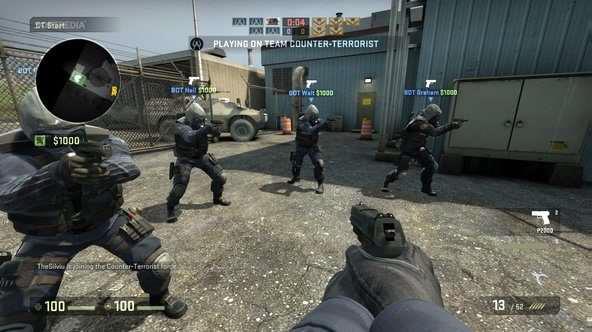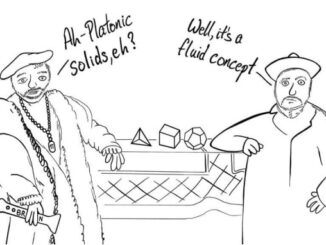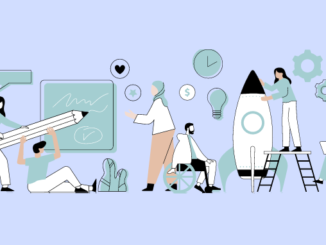
For as long as games have been played, having to work with others as part of a team in order to win
has been a well-established norm when it comes to games and as someone who has spent a rather
large amount of time playing and studying these games, I thought I’d share a few tid-bits on what
should be kept in mind whilst designing and developing games with teamwork in mind.
What is teamwork?
Firstly, teamwork is usually defined as “cooperative or coordinated effort on the part of a group of
persons acting together as a team or in the interests of a common cause.”(Dictionary.com LLC, 2020)
Seems like a pretty simple way to understand what teamwork is as a term that highlights what it
says on the tin. However, it is important to realise that teamwork isn’t exclusively used by teams and
can emerge through random acts of cooperation between people who may be outside of your own
team.
This leads to an intriguing situation where it is essential for teams to have effective teamwork to
thrive but you don’t necessarily need a team to display good teamwork. One such way of viewing
the idea of good teamwork would be as The Happy Manager describes as a set of behaviours and
attitudes that encourage the desire to succeed through a sense of unity and enthusiasm in sharing
common interests and responsibilities in order to complete the tasks. (The Happy Manager, 2020)
This leads to the more robust and flexible definition of teamwork being “when a group of people
work together cohesively, towards a common goal, creating a positive working atmosphere, and
supporting each other to combine individual strengths to enhance team performance.”(The Happy
Manager, 2020) A bit longer than the standard dictionary definition, but is more useful for our
purposes of figuring out how to best design games that feature teamwork.
Types of cooperation
I found that one of the most important questions that I feel needs to be asked when designing a
game around teamwork is “What kind of reliance on cooperation do I want to put onto the players?”
This question came from when I was perusing my library of team-based games to determine any
differences between them, after a while I noticed that they tend to fall into 2 categories, games that
force cooperation or games that incentivise cooperation.
Forced cooperation games are ones that are rather rigid and go all in with the idea that the players
need to work together in order to achieve success, regardless of their skill. This is typically due to
these games utilising functions which require the assistance of other players to be accomplished.
Whilst these games are satisfying and certainly give the feeling of working as a team to accomplish a
shared goal, it can lead to frustration through the simple act of people on your team not cooperating
with you, ultimately leading to nothing getting done.
One of the main examples of a game that falls into this category would be the Left 4 Dead game
series where if you’re incapacitated by the enemies of the game, you need the assistance of your
fellow survivors in order to get back on your feet or to stop whatever’s attacking you at the time.
Left 4 dead (Valve 2008): Being incapacitated, needing the help of your allies to get back up.

Games that incentivise cooperation are more relaxed in the sense that the tasks within the game are
accomplishable on your own if you’re skilled enough, but are far easier or offer more rewards when
you work with your teammates to complete them. Although this is a far more flexible approach than
the previous category, it may lead to players acting selfishly should they feel that their teammates
aren’t playing well enough or against their wishes.
One example of this would be the Counter Strike game series which has two teams facing off against
each other, one team needing to plant and defend a bomb at a specific location and the other team
needs to stop them from achieving this, all while trying to eliminate each other. These tasks are
accomplishable by a single player, it is much easier if you work alongside your teammates to get the
job done.

Counter Strike Global Offensive (Valve 2012): Counter-terrorists preparing for the upcoming mission.
Interestingly the aforementioned cooperation categories are by no means exclusive to one another
as there are some games that have managed to combine elements between these two categories to
make some interesting experiences to provide players with the best of both worlds. Games such as
League of Legends have two teams of 5 players choose from a wide selection of characters with their
own strengths and weaknesses to push through and destroy the enemy base whilst defending your
own.
These games combine the elements of these two categories in a way where the things that the
player is able to accomplish within a match is determined by many different factors including;
- The character they have chosen, with some characters being able to accomplish tasks that
others cannot. - The performance of the players, their allies and their opponents, with strong players being
able to easily assist weaker players who are being overwhelmed by their enemies, making
their weaker allies stronger and able to contribute more to the current match. - Completing certain objectives throughout the map which has difficulty ranging from being
able to be fought alone, to needing the help of your teammates to succeed.
League of Legends (Riot Games 2009): Blue team members fighting off red team members after
destroying a tower.

destroying a tower.
Although it can be beneficial to develop a game that combines the best of both of the
aforementioned categories, it also has the risk of combining the weaknesses as well, with
despondent teammates able to actively sabotage your team’s efforts by either not assisting with
completing objectives or ‘feeding’ the enemy through deliberately letting them kill the player,
making the enemy stronger to the detriment of their own team.
Whilst this is more of a personal musing that has been acquired through extensive playtime and
observing games being played at both a casual and professional level, I feel that there is something
of value to be shared from thinking about team-based games in this way.
Things to keep in mind for designers
This section is a set of take-away thoughts that may be helpful to you if you wish to develop games
which have players utilise teamwork.
Firstly, this is more of a reiteration on what was discussed in the previous section but I feel it’s
important to reinforce it here. The main thing that you must ask yourself is “What kind of reliance on
cooperation do I want to put onto the players?” This just makes it easier to decide on how much
freedom you wish to provide the players of your game through the mechanics that they interact
with within the game.
Next, depending on how you answer the previous question, allowing players to choose the types of
roles that they wish to fulfil as they play is very important as this will allow players to play to their
strengths whilst giving them the opportunity to improve their skills at a role they may not be
comfortable with. A good example of a game that does this would be League of Legends which
categorises their playable characters into a variety of roles and they have a match making system
which allows players to choose the role they wish to play in the upcoming match. All in all, it’s nice
to give players agency and freedom to play how they want to.
Lastly, you need to give your players the ability to quickly and effectively communicate with their
teammates. Seems simple enough, but many games still rely on either a typing text system which is
antiquated and forces the player to stop what they’re doing in order to type out their message,
leaving them vulnerable, or a voice chat system, which is reliant on the players having either the
necessary equipment or the desire to talk to people, which isn’t always present. However, many
games utilise a ping system which provides a quick and simple message or notification to
teammates, depending on the type of ping used.
The best example of a ping and callout system used in games would be the one in Apex Legends,
which offers players a wide selection of context sensitive callouts which depend on the player’s
actions and condition (such as “I’m reloading” or “I’m getting shot at”) and notifications (such as
“Someone’s been here”, or “I’m defending this area”) that depend on what the player is looking at
and are quickly accessible to the player without breaking their flow of gameplay.

subtitles.
Finally I wanted to share a neat little article by Leszek Gorniak on Gamasutra which covers some very
important topics in setting the foundations of designing games as a team which utilises creating a
‘Design Compass’ which is something that helps a team to share the same idea for the design of the
current project and also utilising a method they call ‘Question-Driven Design’(2019) which has you
focus on asking questions when faced with design problems which helps to easily break down the
problem that you’re facing in a more manageable way.
Definitely an interesting read if you want to have a slightly more diplomatic approach to solving
problems with fellow designers and developers.
All in all, teamwork is a very interesting beast that exists regardless of being in a team and when
utilised effectively, great things can be accomplished. So, get out there and practise good teamwork!
References and further reading:
Dictionary.com LLC (2020) Teamwork Definition. Available at:
https://www.dictionary.com/browse/teamwork?s=t (Accessed: 23 May 2020).
Gorniak, L. (2019) Challenges of Team Design, Gamasutra. Available at:
https://www.gamasutra.com/blogs/LeszekGorniak/20190514/342552/Challenges_of_Team_Design.
php (Accessed: 23 May 2020).
The Happy Manager (2020) Define Teamwork, web article. Available at: https://the-happymanager.
com/articles/define-teamwork/.
Respawn Entertainment (2019) Apex Legends [Digital Download] Windows, Xbox One, PS4.
Redwood, California, U.S.A. : Electronic Arts
Riot Games (2009) League of Legends [Digital Download] Windows, OS X. Los Angeles, California,
U.S.A. : Riot Games
Valve (2012) Counter-Strike : Global Offensive [Digital Download] Windows, OS X, PlayStation 3,
Xbox 360, Linux. Bellevue, Washington, U.S.A. : Valve
Valve (2008) Left 4 Dead[CD, Digital Download] Windows, OS X, PlayStation 3, Xbox 360. Bellevue,
Washington, U.S.A. : Valve
- Observing how games teach players to think and plan ahead - 12th March 2021
- Learning about systems using games. - 15th January 2021
- Focus on… Wargaming and Wargames - 8th November 2020





Be the first to comment